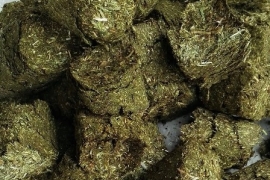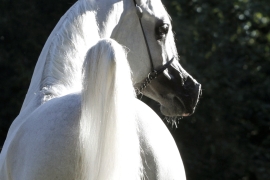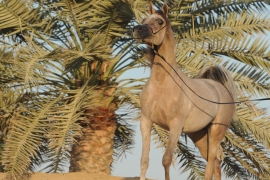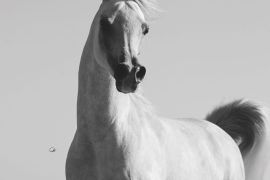I recall in the 1970s that a certain level of "celebrity" became associated with the Dahman Shahwan strain. It had become much admired, largely through the popularity of the beloved stallion Ansata Ibn Halima. The strain had already been in the U.S. for a long time established in Egyptian lines by Mr. Babson's imported mare Bint Bint Sabbah. Her dam line produced some quality champions over the years. Bint Bint Sabbah's handsome sons, Khebir, Fasaab and Fabah were much-admired sires and many of her daughters founded important families. When Ansata Ibn Halima arrived on the scene, he crossed well with the tail female Bint Bint Sabbah horses, which included the recipe of the renowned "Nile family." When the splendid Ansata Bint Bukra arrived, another celebrity for the Dahman Shahwan debuted. The contribution of these individuals, while not the only representatives Dahman Shahwan, created a dynasty and in some ways also created an image in the minds of many as to what the Dahman Shahwan should look like: ideal size, not too big not too small, balanced bodies, clean limbs of just the right proportions, relatively short backs, arched tails, gracefully arched necks, beautiful heads, not too long-not too short, large eyes and wonderful temperament. It sounds like the description of the ideal Arabian horse, almost like the rulebook standard drawing of an Arabian. Indeed many of this strain (though not all) seemed to follow more or less the "rule book" standard look. In my youth I figured it must have something to do with El Dahma, the 1880 mare, a root mare this strain in Egyptian breeding. It was just an assumption that I had for many years without looking into it further. However, as I traveled over the years I began to realize that the Dahman Shahwan strain, like all other strains, could come in a variety of shapes, sizes and colors. So what role does El Dahma play in Egyptian bloodlines other than just a famous female line?
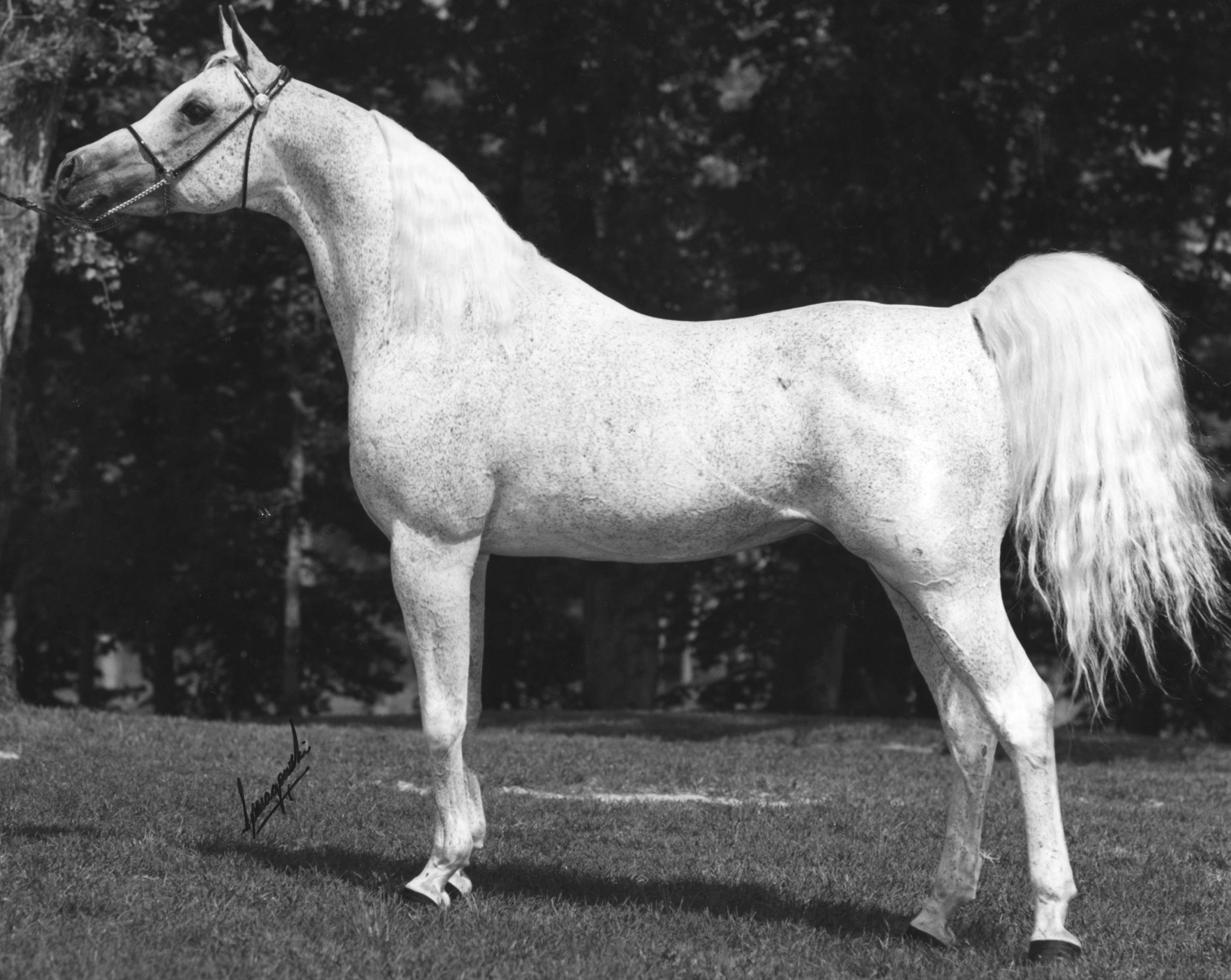
Ansata Ibn Halima (Nazeer x Halima) 1958 grey stallion.
He became the symbol of the ideal Dahman Shahwan stallion.
He carries 7 crosses to the original El Dahma of Ali Pasha Sherif.
Jerry Sparagowski photo.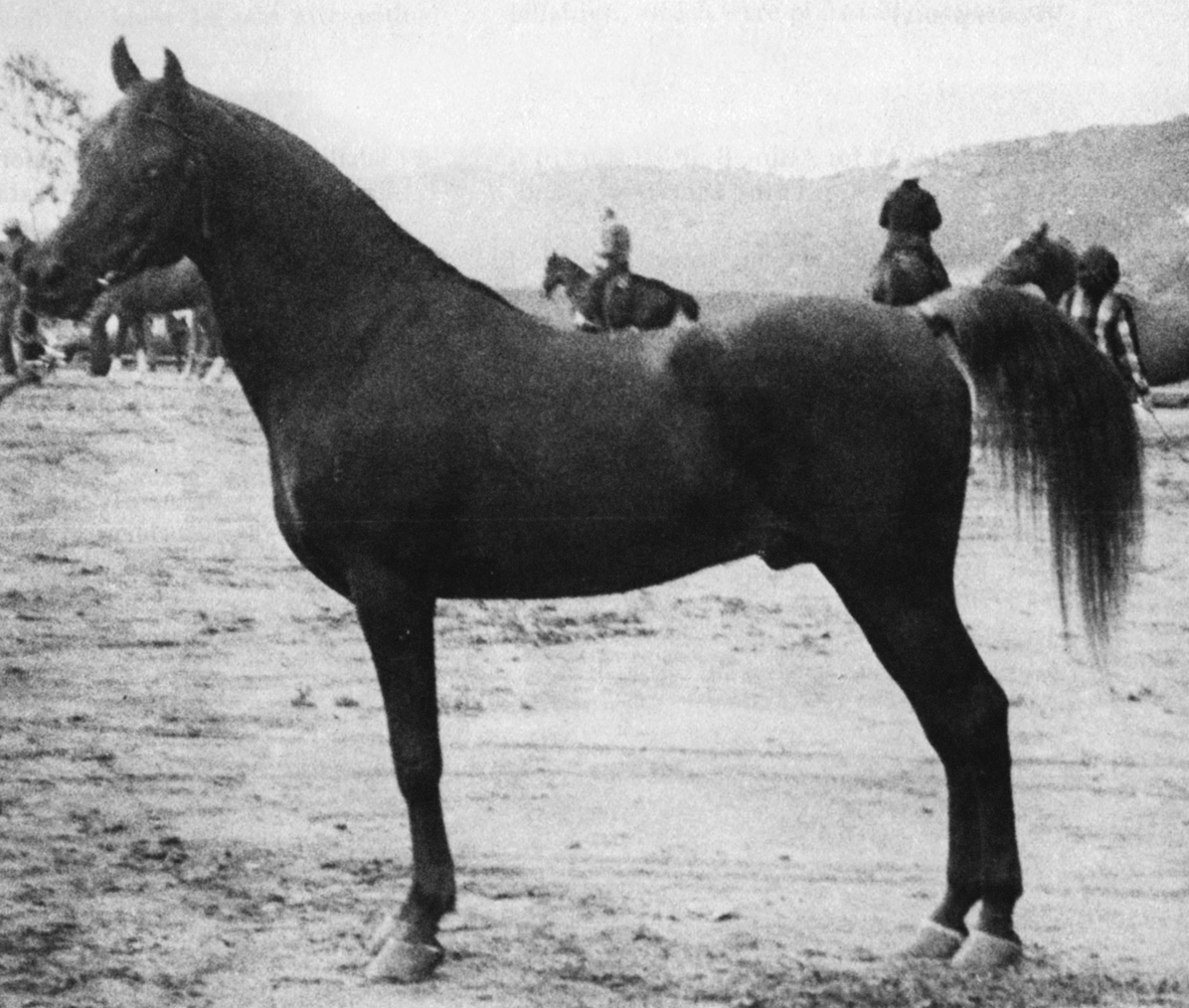
Khebir (Fadl x Bint Bint Sabbah)
1942 liver chestnut stallion an early popular sire
in America of Mr. Babson's breeding.
Foster photo.
El Dahma was a mare in the stud of legendary breeder Ali Pasha Sherif born around 1880. There is some speculation based on Lady Anne Blunt's writing that El Dahma descends from Abbas Pasha stock. We don't know for sure how many foals she had in her lifetime but she was at some point given by Ali Pasha Sherif to Khedive Tewfik, ruler of Egypt at the time. The Khedive produced her daughter Nadra El Khebira at his stud. The Khedive's son, Khedive Abbas II inherited his father's stud and under his involvement El Dahma's next three foals were born. At some point later, all four of El Dahma's produce would become a part of the breeding of the renowned Prince Mohammed Ali Tewfik. El Dahma's four foals that have bred on in today's Arabians are: Nadra El Khebira 1891 grey mare (x Nader El Khebir); Obeya, 1894 grey mare (x Koheilan El Mossen); Gazza, 1895 grey mare (x Saklawi I); Saklawi II, 1896 grey stallion (x Saklawi I).
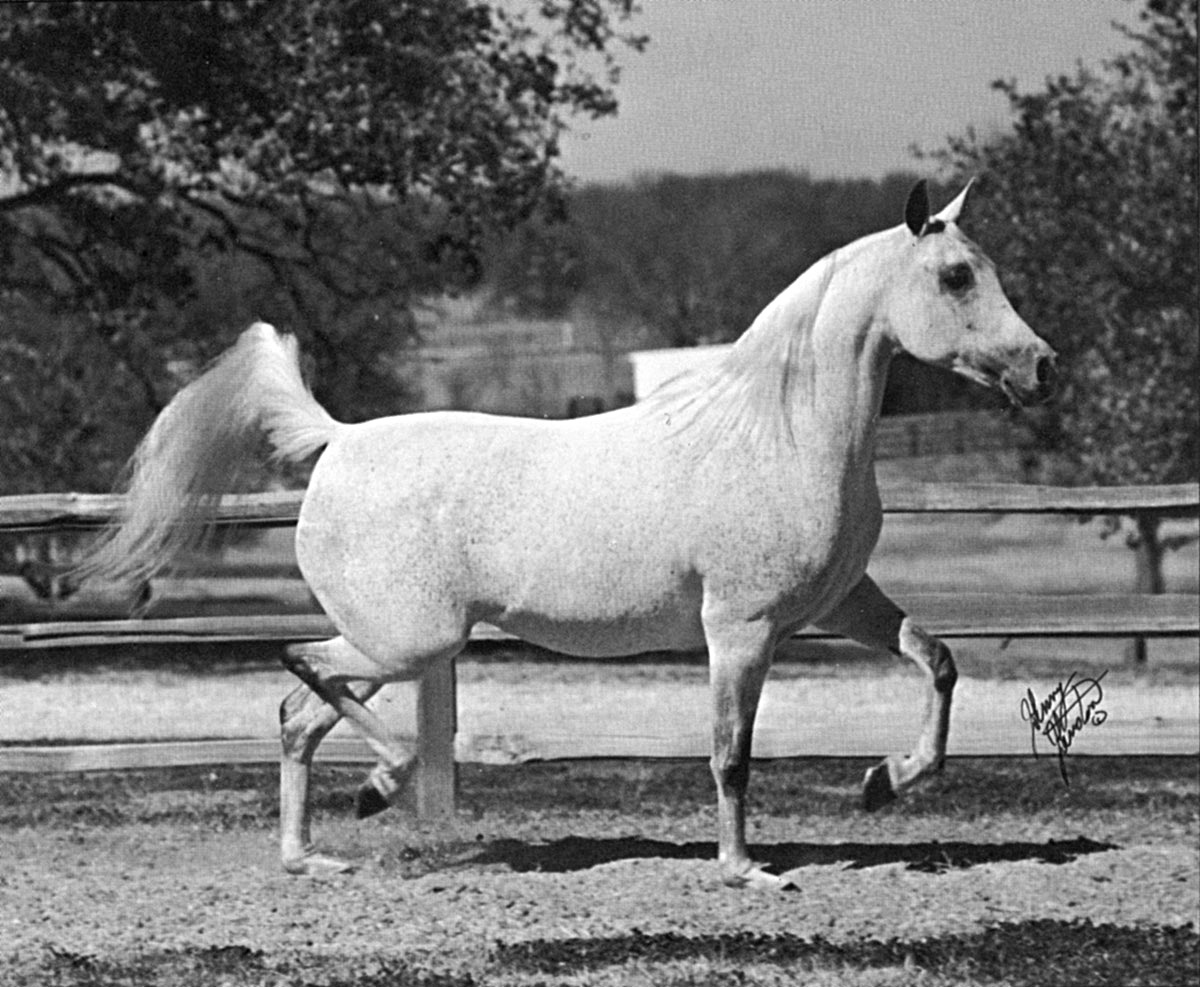
Fa Halima (Ansata Ibn Halima x Sabrah) 1970 grey mare
U.S. National Champion mare and Paris Reserve World Champion mare.
A popular blend of Mr. Babsons Dahman Shahwan mare
Bint Bint Sabbah with Ansata Ibn Halima.
Johnny Johnston photo.
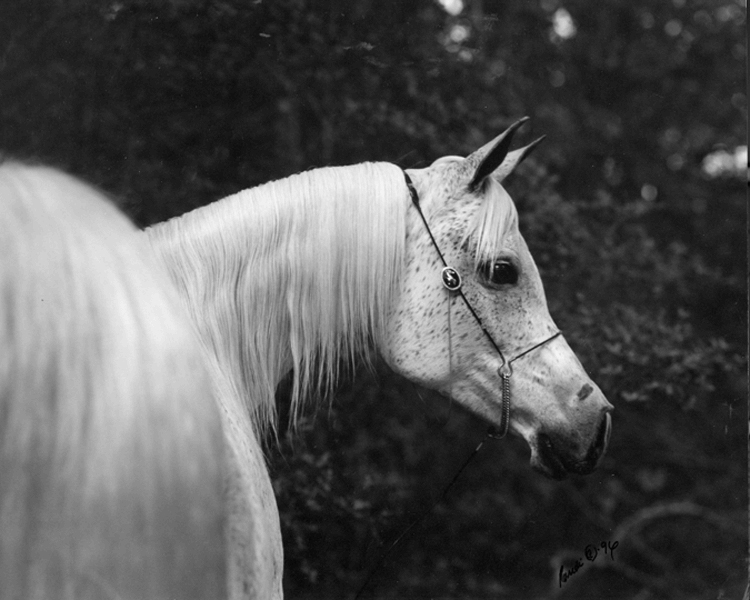
Fa Sherifaa (Ansata El Sherif x Faserrabba) 1985 grey mare
representing the ideal blending of three famous lines to El Dahma,
Ansata Ibn Halima, Ansata Bint Bukra and Bint Bint Sabbah.
Randi Clark photo.
El Dahma's daughter Nadra El Khebira is the grand dam of the celebrated mare Farida who has established a large family. Farida created female lines in Europe, via the famous German Weil-Marbach "M" family handed down from the lovely mares Malikah and Moheba II. Weil-Marbach also used the Farida blood via the mare Nadja of the Nefisa line. Another Farida family was established at Babolna in Hungary from the exceptional mare Bint Inas. In Egypt, Farida's female line maintained a branch through such splendid mares as Adaweya. The Nefisa line came to the U.S. in both Pritzlaff and Gleannloch Imports. Farida's granddaughter the aged Ghazalahh, grandmother of Bint Inas, was imported to the U.S. by Gleannloch however did not produce there. Two other Farida female lines came to the U.S. via Ansata Bint Sameh and her ¾ sister Deenaa, known as the grand dam of legendary stallion Anaza El Farid. Of course Farida's most world-renowned male descendant is Ansata Ibn Halima.
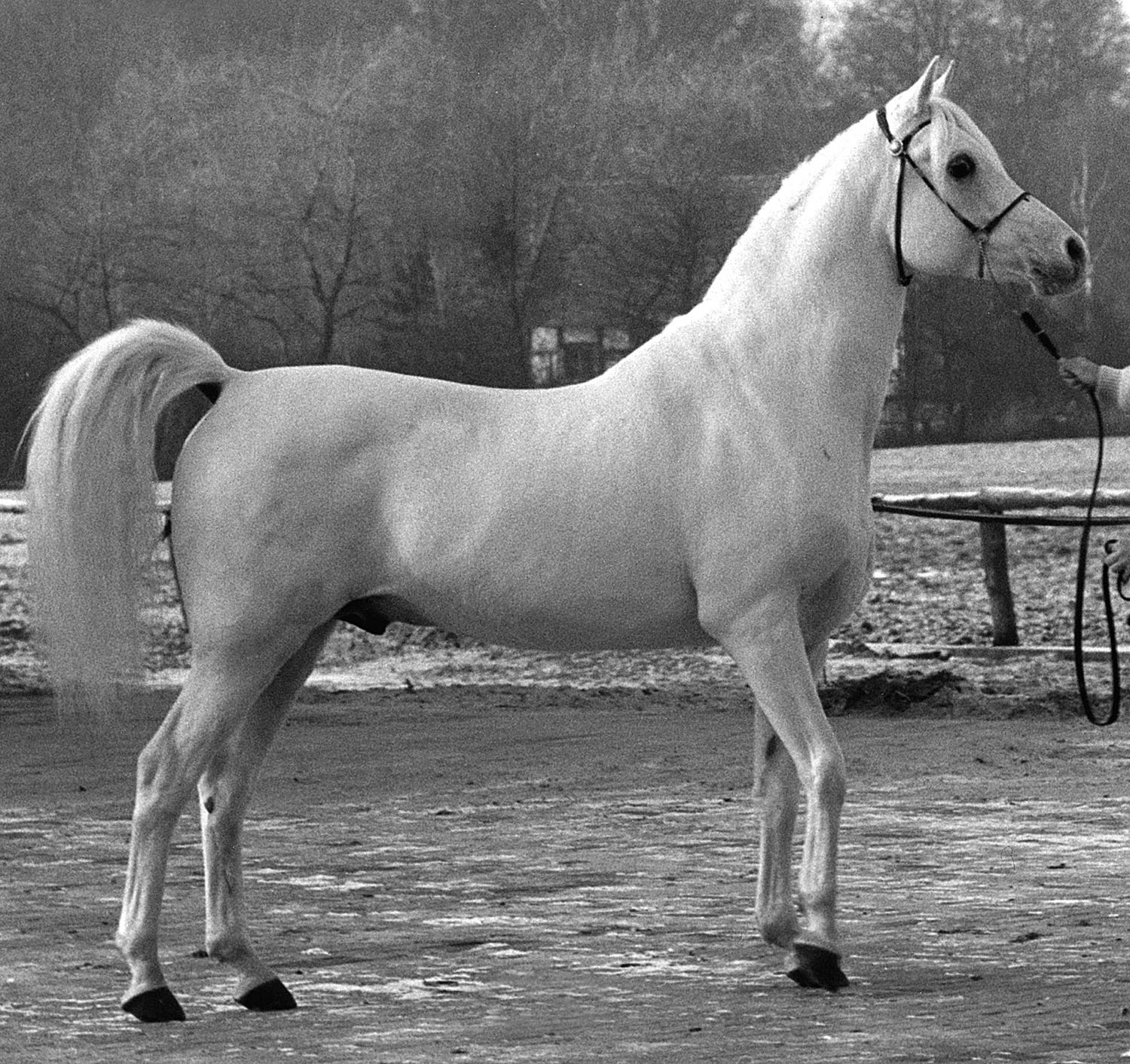
Madkour I (Hadban Enzahi x Moheba II) 1971 grey stallion
representing the Farida line from the famous "M" family of Malacha.
He is the sire of Jamilll.
Judi Forbis photo.
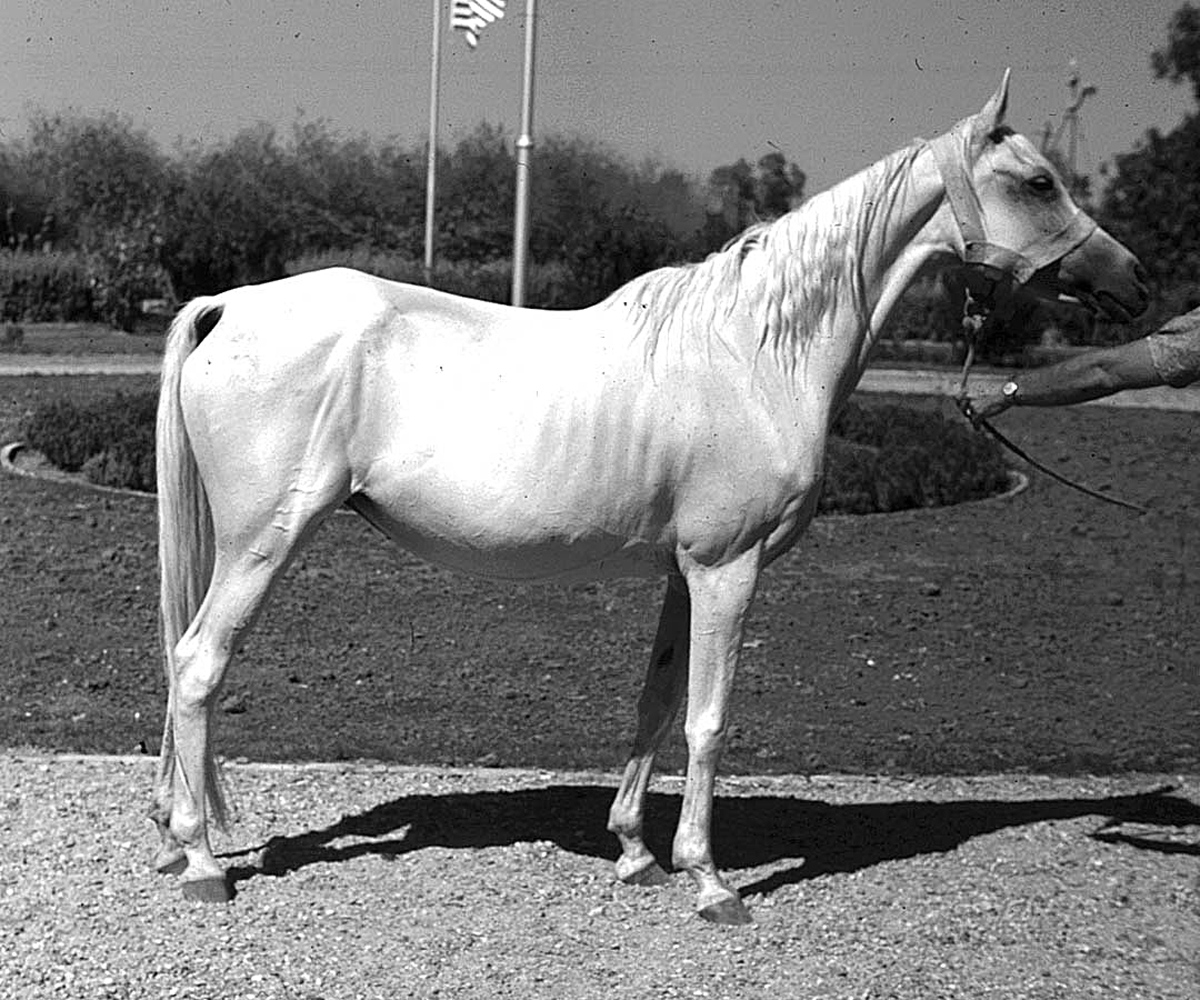
Kamar (Nazeer x Komeira) 1953 grey mare,
a beautiful mare and another admired branch
of the original El Dahma, via Layla.
Judi Forbis photo.
El Dahma's daughter Obeya is the grand dam of the mare Sabah (with 2 lines to El Dahma), who became one of the most prolific female lines to El Dahma via her three grand daughters, Bint Bint Sabbah, Bukra, and Layla. Bint Bint Sabbah, the aforementioned Babson import, produced seven daughters, many found not only in Egyptian lines but also in other American bloodlines. She is the dam line of International Champion Fa Halima (x Ansata Ibn Halima), just one beautiful example of the ideal matching of the Halima and Sabah blood. The beautiful Bukra produced Bint Bukra at the EAO and also Ansata Bint Bukra imported to the U.S. by Ansata and, in combination with Ansata Ibn Halima's blood, founded a huge influence within Egyptian lines worldwide. Layla is revered as the female line of Europe's magnificent Tamria line, from the beautiful mare Kamar. Because the Sabah branch of El Dahma is connected to so many females it has helped El Dahma become perhaps the largest mare line within straight Egyptian breeding.
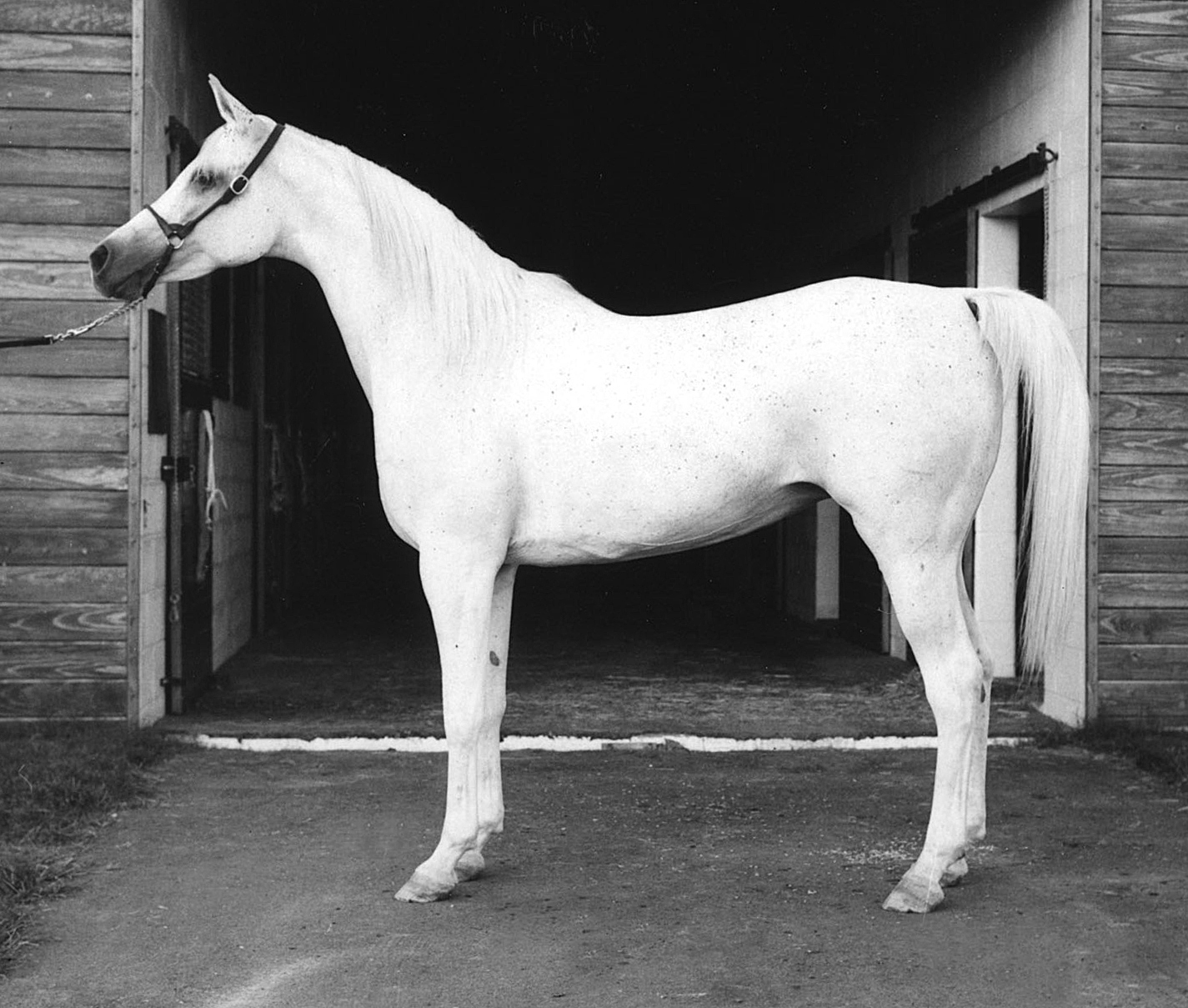
Ghazalahh (Mashhour x Bint Farida) 1951 grey mare,
a truly magnificent mare founder of the Inas branch of El Dahma.
Judi Forbis photo.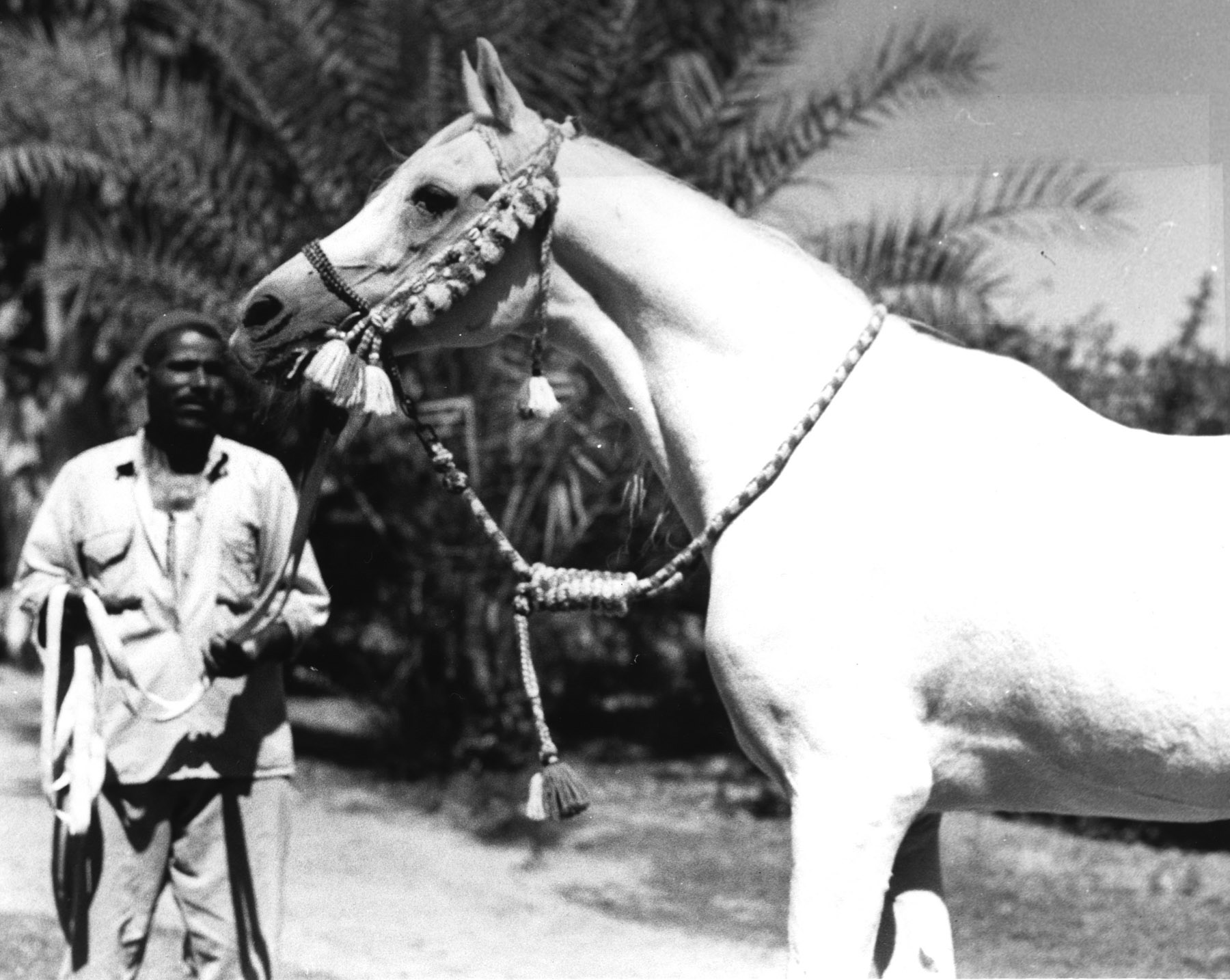
Nazeer (Mansour x Bint Samiha) 1934 grey stallion,
the most transformational sire in Arabian breeding
since the Polish stallion Skowronek.
Though Hadban Enzahi by strain, even Nazeer traces to El Dahma,
through his grandsire Gamil Manial.
Judi Forbis photo.
The line to Gazza is not found as a female line but rather through her grandson the bay stallion Bark, who is found in the pedigree of the Queen Mother's stallion Ibn Farhan and also the imported Babson mare Bint Saada. Bint Saada produced no daughters that bred on but her son Faddan (x Fadl) is found in many prominent horses such a Prince Fa Moniet and Akid Geshan.
El Dahma's only son is Saklawi II. While it has already been noted El Dahma's female line is very prolific, what has further made her one of the most influential Egyptian mares of all time is the fact that her son Saklawi II is also the sire of two important stallions Mabrouk Manial, sire of numerous important mares, and Gamil Manial, grandsire of Nazeer.
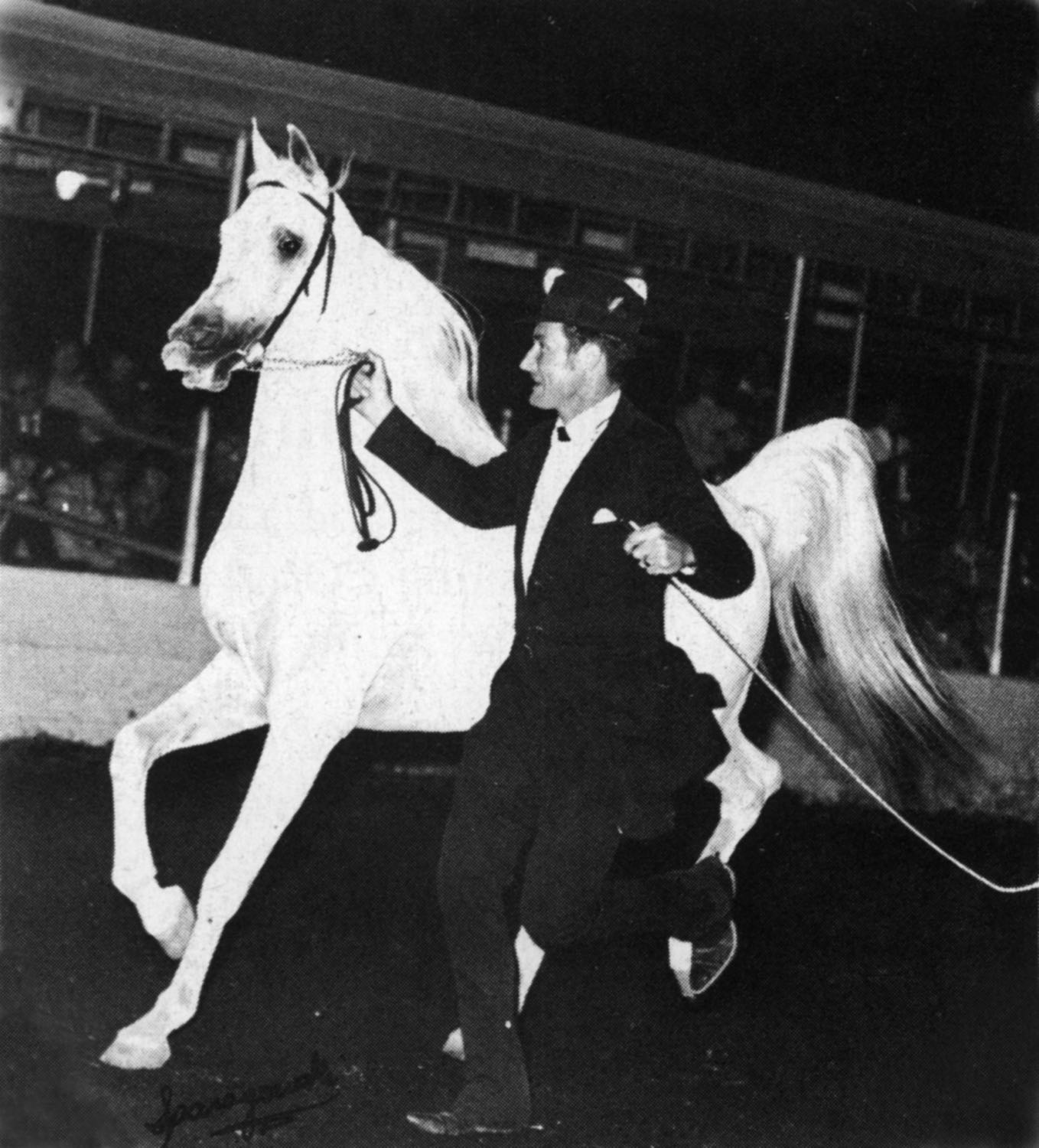
Morafic (Nazeer x Mabrouka) 1956 grey stallion,
certainly the most exotic Nazeer son.
Even though he is of the Saklawi Jidran strain Morafic carries 11 crosses
to the original El Dahma, compared to Ansata Ibn Halima's 7 crosses.
Jerry Sparagowski photo.
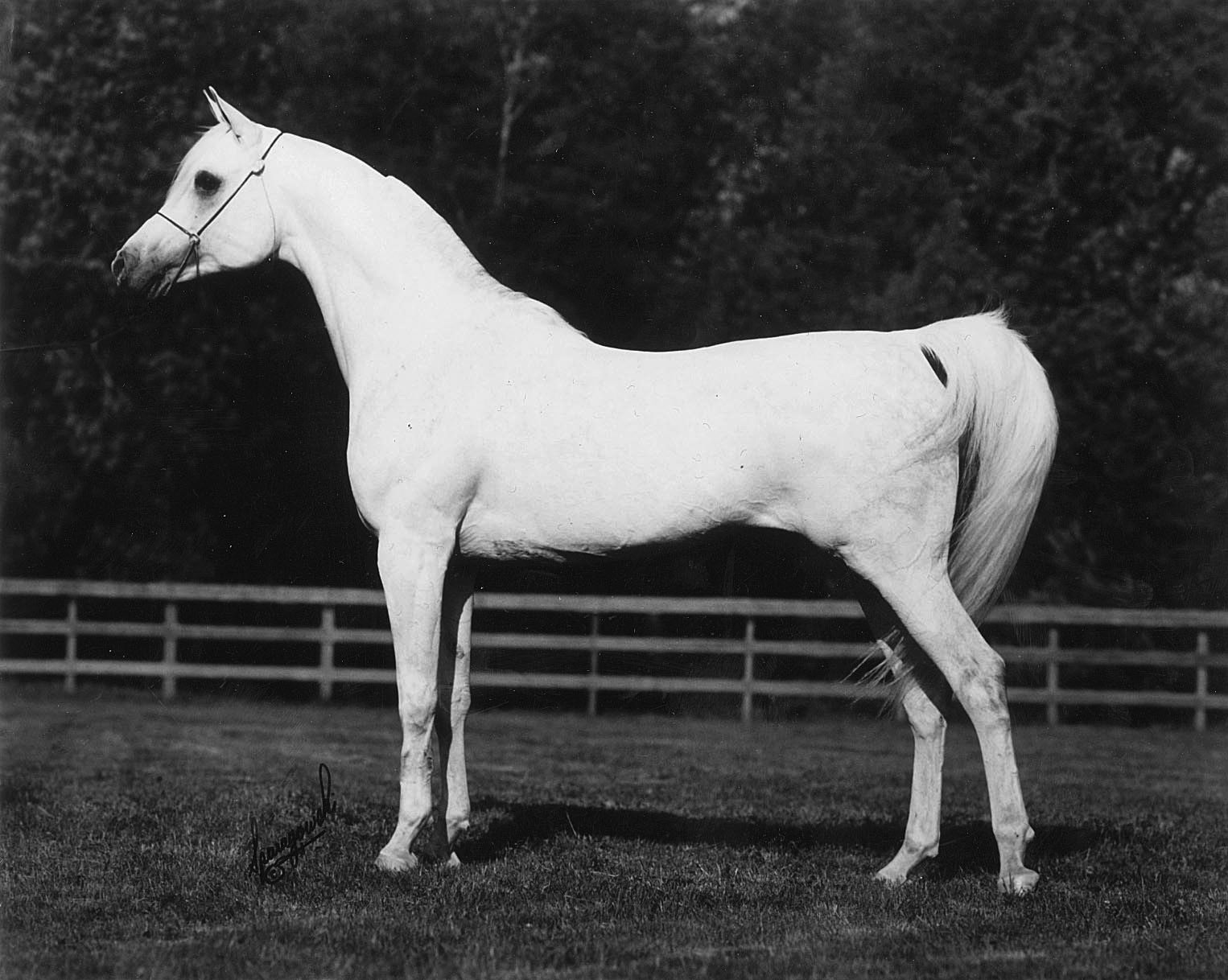
Prince Fa Moniet (TheEgyptianPrince x Fa Moniet)
1981 grey stallion. A very prepotent sire.
He not only carries 48 crosses to the original El Dahma
of Ali Pasha Sherif but he carries a line to El Dahma's daughter
Ghazza via his granddam Fada.
Jerry Sparagowski photo.
Considering all this, one can easily see that there are many crosses to El Dahma in Egyptian pedigrees. Interestingly the famous and most exotic Nazeer son Morafic, a horse who is clearly much different in type than the other famous Nazeer son Ansata Ibn Halima, actually has more crosses to El Dahma than does Ansata Ibn Halima. Morafic has 11 lines to El Dahma. Ansata Ibn Halima has 7 lines to El Dahma. Because El Dahma comes down through Egyptian breeding in a variety of ways, she is in every Egyptian pedigree, and her role is very strong throughout Arabian breeding, much in the same way that the Blunt's mare Rodania is found throughout Egyptian and Arabian breeding worldwide. By example, today just within straight Egyptian breeding the recent Paris World Champion Royal Colours carries 579 crosses to El Dahma.
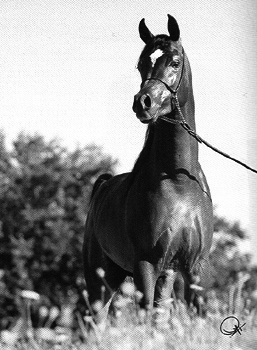
Royal Colours (True Colours x Xtreme Wonder)
2003 straight Egyptian bay stallion.
2009 Paris World Champion stallion.
He carries an incredible 579 crosses to the original El Dahma of Ali Pasha Sherif.
Gigi Grasso photo.
Even horses that are not straight Egyptian benefit considerably from El Dahma's influence. Paris World Champion Pianissima has 71 crosses to El Dahma. Marwan Al Shaqab has 69 crosses to El Dahma, and WH Justice has 52 crosses to El Dahma.
There is no confirmed description about what El Dahma looked like herself, so we cannot make the sweeping judgment that there is a certain look to the El Dahma family. But it is clear by the huge family she has created that her role in Arabian breeding is enormous and her descendants will continue to be popular for a long time. So it is only fitting that we celebrate Egypt's "first queen" El Dahma.
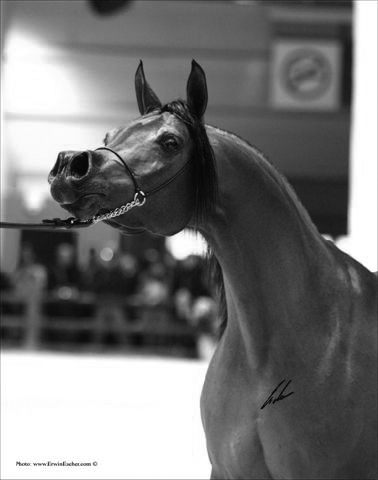
Pianissima (Gazal Al Shaqab x Pianosa) 2003 bay mare.
A Paris World Champion mare and universally admired.
Though not straight Egyptian, she carries an incredible 71 crosses
to the original El Dahma of Ali Pasha Sherif.
Erwin Escher photo.




